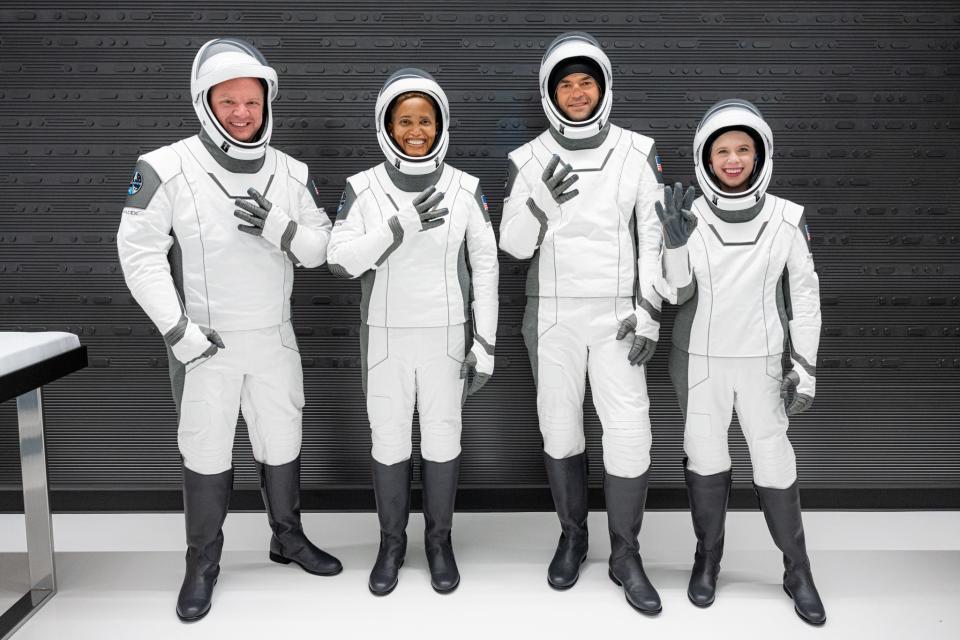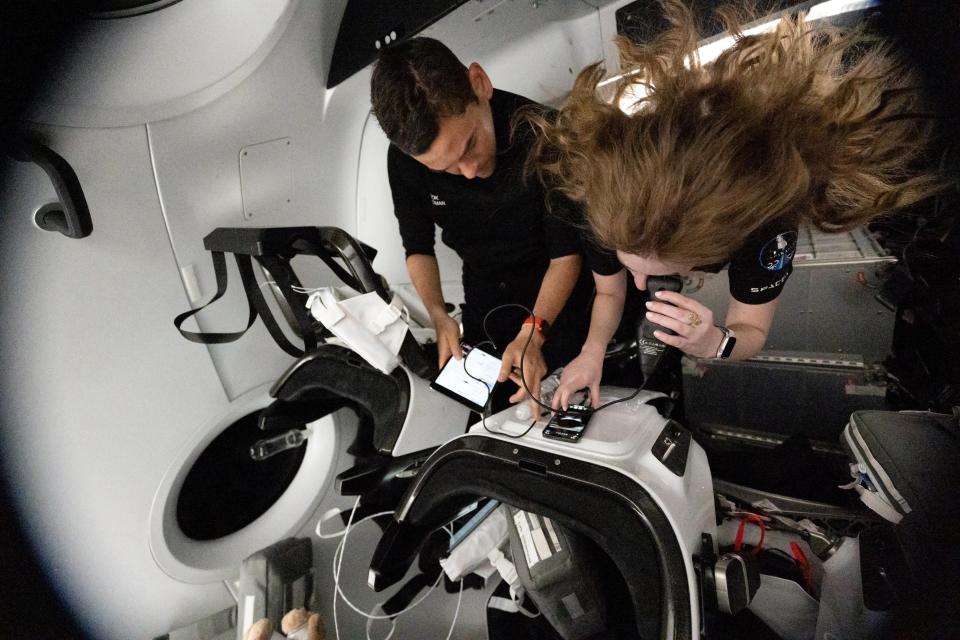Scientists probe a space mystery: Why do people age faster during space travel?
Humanity's future may involve getting to a planet other than Earth ‒ but first people will have to survive the journey. That's why in a new series of papers scientists explore the impact of space travel on the human body from skin to kidneys to immune cells to genes.
Four civilian astronauts allowed themselves to be researched from top to bottom as they circled in low-Earth orbit for three days aboard the 2021 SpaceX Inspiration4 mission and then returned to their normal lives.
One of the most important observations was that although their bodies were stressed and showed dramatic signs of aging during the journey, 95% of the indicators studied returned to normal within a few months.
Radiation exposure apparently causes the acceleration of disease and damages cells "even in three to five days," Susan Bailey, a co-author on many of the studies and a radiation cancer biologist at Colorado State University in Fort Collins, said in a Monday video call with reporters.
Space news: Starship splashes down for first time in 4th test
Bailey and other scientists have studied astronauts before, most famously, identical twins Scott and Mark Kelly, during and after most of the 520 days Scott spent in space. (Mark is now a senator from Arizona, choosing to run for political office after his wife, Congresswoman Gabby Giffords, now a gun control advocate, was shot in the head by a constituent.)
But this collection of studies, published Tuesday in Nature and related journals, shows the impact of space travel both on more people and also on a more diverse group, not just the exclusive people who can pass NASA's rigorous selection process.
Hayley Arceneaux, for instance, a physician assistant who served as the mission's medical director, was treated for cancer at age 10 and was one of the rare women in space. At 29, Arceneaux was also the youngest-ever space traveler.
Each of the four members of Inspiration4 represented a different decade of life, and began to provide the kind of diversity that will be crucial to understanding how space travel may impact people of different ages and health status and with different lived experiences, the researchers said.
"It really provides the foundation as we think ahead and more futuristically," Bailey said. The papers, she said, encouraged her and her peers to "think a little bit more about what it's really going to take for people to live in space for long periods of time, to thrive, to reproduce. How is all of that really going to happen?"
Bailey spent months studying the biology of the space travelers. But Monday's video conference was the first time she'd seen them face-to-face. "I'm familiar with your DNA," she told Arceneaux and fellow space traveler Chris Sembroski. "But it's nice to meet you."

Better understanding the damage that accumulates and how the body adapts to space travel will also lead researchers to treatments and fixes, said Bailey and the two other co-authors on the call, Christopher Mason, professor of genomics, physiology, and biophysics at Weill Cornell Medicine in New York, and Afshin Beheshti, an expert in bioinformatics at Blue Marble Space Institute of Science in Seattle.
In addition to age-related diseases, the papers revealed other problems space travelers can develop, like kidney stones. "Here we can treat that, but a kidney stone halfway to Mars, how are you going to treat that?" Beheshti wondered aloud. "That wasn't on the radar before" these papers.
"As we start to unravel some of this," Bailey added, "we'll improve not only our ability to deal with radiation exposure but also be addressing some of these age-related pathologies like cardiovascular disease that certainly could influence astronauts' performance en route to Mars."
Another insight: Women seem to recover faster from space damage than men, though Mason cautioned that more women need to be studied to better understand the effect and that faster recovery could come at the expense of higher long-term risk of breast and lung cancer from extended radiation exposure.

The lessons learned from space travelers could help folks on Earth, too, the researchers said.
Learning how to keep cells safe from radiation, for instance, might be transferable to help minimize damage to cancer patients undergoing radiation treatments, Mason said.
New protection measures could also be useful for people exposed to radiation at work or in case of a nuclear reactor disaster like the meltdown at the Fukushima Daiichi power plant in Japan after the 2011 earthquake there.
Because space travel speeds up aging, learning how to reverse or slow that process could help "extend health-span for us mere earthlings as well," Bailey said. The new skin study, for example, suggests approaches that might be used to help people keep their skin looking younger longer.
"There's all kinds of things that could potentially benefit people on Earth," she said.
The Inspiration4 mission, which raised $250 million for St. Jude Children's Research Hospital in Memphis, Tennessee, also relied on some experimental technologies for recording medical information, including a handheld ultrasound imaging device, smartwatch wearables, a measurement device to check for eye alignment and new methods for profiling the immune system as well as other cells and molecules.

These devices and approaches could be useful for Earth-bound settings that are far from major urban medical centers, Mason said.
Relying on civilians rather than NASA astronauts also made it easier to study the space travelers, who signed waivers and aren't subject to government regulations, he said. Their data will be made available to other researchers.
Both Arceneaux and Sembroski, a data engineer who works for the space technologies company Blue Origin, said they loved their spaceflight and would do it again in a second if given the chance. But they also hope many others are given the same opportunity.
"We're not going to see the civilization in space that we want without people being willing to share that experience," Sembroski said about sharing his data for research. "It was fun to be part of this."
"Our mission had, not only a lot of heart behind it," Arceneaux added, "but we really wanted to make a scientific impact."
Arceneaux said she doesn't mind the mark left by the biopsy used to study how her skin reacted to space travel. "I love my space scar!" she said.
"Better than a tattoo," Bailey responded.
The best news from the research on both Kelly and the Inspiration4 travelers, Mason said, is that there's "no show-stopper. There's no reason we shouldn't be able to get to Mars and back."
Radiation exposure probably means people shouldn't be taking multiple trips to and from the red planet, he said. But "so far, from all we've observed, the body is successfully adapting to the space environment."
Karen Weintraub can be reached at kweintraub@usatoday.com.
This article originally appeared on USA TODAY: New research studies why traveling in space ages astronauts so much


